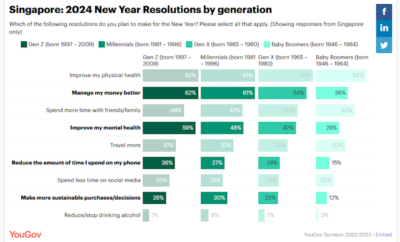
Insights + interviews
In Conversation With Dr Leong Hoe Nam Part 2
With the flu season in full swing, we had another chat with Dr Leong Hoe Nam, to find out more about flu.
AA: Could you tell us more about South East Asia’s flu season? And which months does it fall between?
DL: The flu (influenza) season typically runs from May to July, and January to February each year. However, influenza viruses are widely prevalent in Singapore all year round with two peaks in April-August and November-February. Between the two peaks, Singapore follows the April-July southern winter hemisphere more closely. This phenomenon is seen in neighbouring countries as well (Malaysia and Thailand) with no clear explanation, even though we are close to the equator. One possible explanation can be the spread of infections from travellers who frequent this region and Australia. Studies have shown that tropical countries like Singapore demonstrate comparable influenza-related morbidity (illness) and mortality (death) rates to temperate countries like the USA.
AA: At what point in the season do you recommend the administration of the influenza vaccine?
DL: Influenza vaccination is recommended annually, and April/May is a good time period to consider vaccination for protection before the peaks. For those who are deliberating about it, my advise is to get yourself vaccinated as it is safer than risking illness along with the burden of hospitalisation and missed time from work or school.
AA: What are the most commonly observed, serious complications of influenza that we’re trying to prevent?
DL: Flu infection results in the person being unwell for a few days. The symptoms include high fever, body ache and tiredness amongst others. The other known frequent complications is secondary pneumonia and pneumonitis.
AA: So who are the ones that are at greatest risk for the complications associated with influenza?
DL: Everyone in Singapore who are above six months old should get vaccinated to protect themselves against influenza and its complications. Vaccines have been used for more than 60 years and are the most effective way to prevent flu infection and related severe outcomes. The World Health Organisation (WHO) and the Ministry of Health (MOH) in Singapore recommend annual vaccinations for the below groups. They include:
- Children aged six months to five years
- Elderly individuals (≥65 years of age)
- Individuals with chronic medical conditions (heart, lung, kidney, liver, blood or metabolic diseases)
- Pregnant women at any stage of pregnancy
- Healthcare workers and caregivers of those at high risk
- People in intermediate/ long term care facilities
AA: As for grandparents, I’m sure they would be keen to find out what options they have for keeping their grandchildren under the age of six months healthy this flu season since they can’t be immunised against the flu; or can they?
DL: For those below six months old, mothers should have been vaccinated during their pregnancy, as antibodies that develop after vaccination will be transferred to the unborn child in utero, thus offering protection for the newborn child against hospitalisation and pneumonia for one year. Infants who are six months or older can be vaccinated for flu; for those aged six months to eight-years-old and are receiving it for the first time, two doses are required. Also, from the perspective of a medical health professional, complete vaccinations should be delivered to the widest age range. This way, everyone gets to benefit from the vaccine. In fact, studies have shown that the source of influenza infection in the elderly is young children. Vaccinating the children protects the elderly in the community with a corresponding fall in hospitalisation and pneumonia.
AA: How effective is this flu vaccine expected to be, in comparison to its predecessor?
DL: The quadrivalent flu vaccine is designed to protect against four different flu viruses; two influenza A viruses (H1N1 and H3N2) and two influenza B viruses (Yamagata and Victoria strains). Since the 90s, these four genetically distinct strains of influenza have been in existence, but the traditional vaccine offered only protects one against three (the trivalent only covers two influenza As and 1 influenza B). In other words, influenza cover has never been complete till now as the vaccine only offered protection against one B virus, even though there are two very different lineages of B viruses that both circulate during most seasons. Back then, trying to determine which of the two influenza B strains is the causative one was a bit of a guesswork for WHO. Studies showed that the experts got it right half the time. And whilst one region of the world may have an outbreak with one strain of influenza B (e.g. Yamagata), other regions would have influenza B of the second strain (Victoria). The choice of influenza B strain was simply unpredictable. By adding another B virus to the vaccine (making it a 4 in 1 instead of 3 in 1), the WHO aims to give broader protection against circulating flu viruses. By adding in another strain, additional protection may be up to 50-60% more effective depending on the more prevalent strain type.
AA: Are there certain populations for which the vaccine is best suited for, or for whom they are contraindicated (to make a treatment or procedure inadvisable)?
DL: As mentioned earlier, with studies showing the correlation between the vaccination of children and the corresponding fall in hospitalisation and pneumonia of the elderly in the community, the widespread use of the vaccine may offer secondary benefits for those who cannot receive the vaccine (e.g. those with severe allergies, or whose immunity is extremely poor). It’s also important to note that the influenza vaccine is not a travel vaccine, contrary to popular belief. Influenza exists in Singapore throughout the year, and it kills the elderly yearly (165,000-200,000 in individuals above 65-years-old globally per annum), as such MOH recommends that the young and the old and those with chronic conditions (e.g. diabetes, asthma and COPD) should be vaccinated. If you consider the factors listed above for influenza, you can practically imagine that almost everyone would be in close contact with a patient with an at-risk chronic medical condition, and this illustrates the dynamism of the influenza viruses in the community and how they spread. Centres for Disease Prevention (CDC) Atlanta, USA and the Singapore Clinical Practice Guidelines on Adult Vaccinations thus recommends influenza vaccination for everyone. The additional advantage is that herd immunity in the community improves, leading to increased influenza protection.









